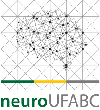Banca de QUALIFICAÇÃO: RAIMUNDO DA SILVA SOARES JUNIOR
Uma banca de QUALIFICAÇÃO de DOUTORADO foi cadastrada pelo programa.DISCENTE : RAIMUNDO DA SILVA SOARES JUNIOR
DATA : 25/11/2021
HORA: 14:00
LOCAL: Remoto devido à pandemia
TÍTULO:
Applications of Eye-tracking in Educational Research and Neurophysiological Aspects of Children's Cognitive Effort during mental rotation testsPÁGINAS: 75
GRANDE ÁREA: Outra
ÁREA: Multidisciplinar
RESUMO:
Scientific investigations in education can elucidate new aspects of teaching-learning interactions and support evidence-based educational practices. In this sense, there is a growing interest in multidisciplinary research including works in the field of neuroscience and cognitive science in the educational context. Technological tools used in scientific research, such as eye tracking, can be useful in schools by providing relevant data on cognitive processes in different daily school tasks, including performance on spatial cognition tests. Spatial ability is relevant to child development and has been associated with academic performance in the fields of science, technology, engineering and mathematics (STEM). Previous neuroscience studies have investigated the neural substrate associated with Mental Rotation Task (MRT) and its relationship with adult learning processes. However, there is little evidence for brain activity in children during visuospatial tasks. The objectives of this work were divided into two studies: (1) to verify the applicability of Eye-tracking in educational and research contexts(1) verify the applicability of Eye-tracking in educational contexts and researches related to neuroscience and education; (2) investigate the neurophysiological correlates of the mental effort involved with the resolution of visual-spatial problems in children through a multimodal approach employing functional near infrared spectroscopy (fNIRS) and eye-tracking. The results of the first study indicate that the Eye-tracking system allows teachers to obtain feedback on student behavior while solving problems. Furthermore, this system can be used in the investigation of cognition and teacher training, providing metacognitive experiences, such as learning monitoring based on eye tracking information. The results of the second study indicate a positive correlation between performance on geometry tests and on the MTR. There is also a positive correlation between PFC hemodynamic activity and MRT performance (OxyHb signal, r = .44; p = .01). These data show that greater PFC activation follows better performance in MRT and geometric problem solving tests. Furthermore, the variation in the amplitude of DeoxyHb in the dorsolateral prefrontal cortex (dlPFC) is associated with performance on the MRT that follows pupil dilation, indicating differences in children's mental effort. Thus, the study suggests that Eye-tracking can provide metacognitive experiences for teachers in the educational context and that children in our sample with greater cognitive effort during the visuospatial skill task perform better in the MRT.
MEMBROS DA BANCA:
Presidente - Interno ao Programa - 1714632 - PETER MAURICE ERNA CLAESSENS
Membro Titular - Examinador(a) Interno ao Programa - 3015190 - RODRIGO PAVAO
Membro Titular - Examinador(a) Externo à Instituição - ELIZEU COUTINHO DE MACEDO - UPM
Membro Suplente - Examinador(a) Interno ao Programa - 2141126 - PATRICIA MARIA VANZELLA
Membro Suplente - Examinador(a) Externo ao Programa - 1305717 - PRISCILA BENITEZ AFONSO
Membro Suplente - Examinador(a) Externo à Instituição - PAULO BOGGIO - UPM




